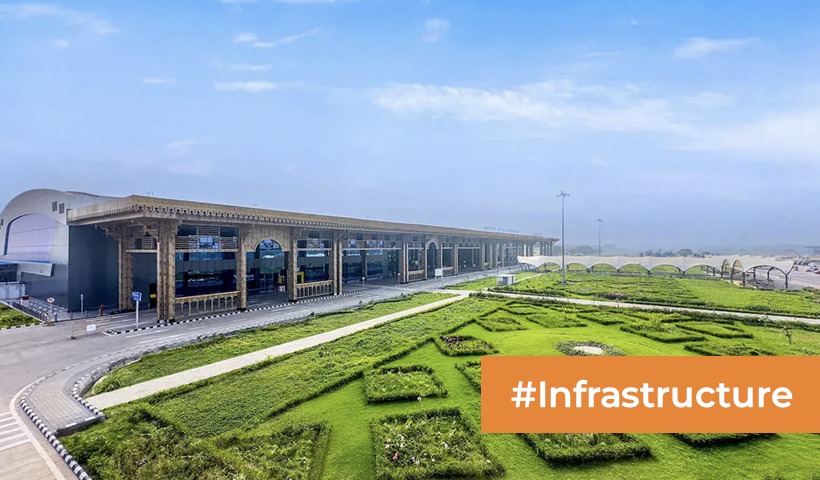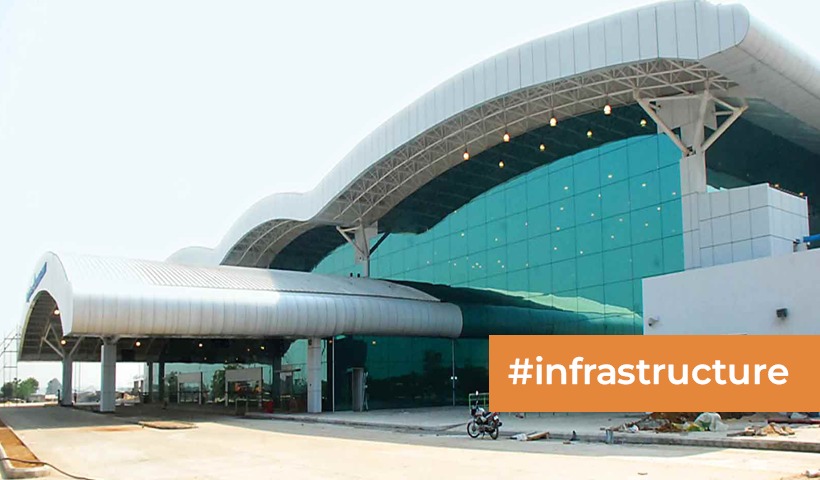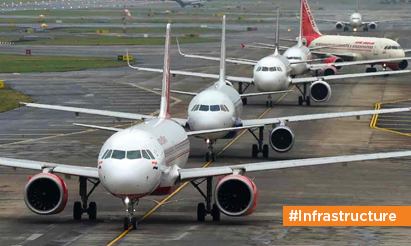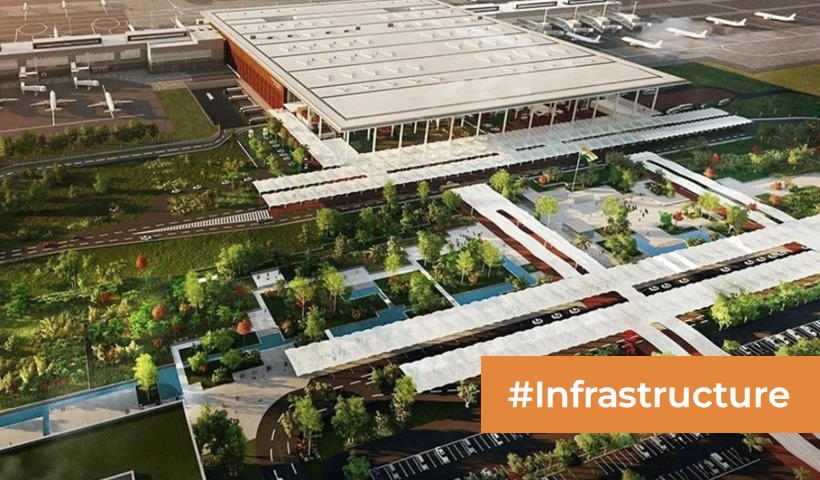Is Ambala Getting a New Airport for Growth and Connectivity?
Ambala, a historic city in the northern Indian state of Haryana, is poised for a significant transformation with the development of its airport. The Ambala Airport, also known as Ambala Air Force Station, is undergoing upgrades to enhance its capabilities and open new avenues for connectivity, trade, and tourism. In this comprehensive article, we will explore the evolution, recent developments, and the anticipated impact of the upcoming Ambala Airport.
Historical Significance:
Ambala, with its rich historical and cultural heritage, has long been a strategic location in northern India. The Ambala Air Force Station, established during the British era, has played a crucial role in the defense infrastructure of the country. The airport has witnessed historical events and has been a hub for military operations over the years.
Evolution of Ambala Airport:
While the airport has primarily been a military airbase, recent developments indicate a shift toward enhancing its civilian aviation capabilities. The expansion of Ambala Airport is part of the larger vision to improve regional connectivity, boost economic activities, and promote tourism in Haryana.
- Upgrade to International Airport:One of the key developments is the plan to upgrade Ambala Airport to an international airport. This upgrade is expected to elevate the airport’s status, making it a gateway for international travelers and cargo. The move aligns with the Indian government’s focus on expanding air connectivity and infrastructure across the country.
- Infrastructure Development:The expansion involves significant infrastructure development, including the extension and modernization of the runway, construction of a new terminal building, and installation of advanced navigational and communication systems. These upgrades are aimed at accommodating larger aircraft, improving passenger experience, and ensuring the airport meets international standards.
Connectivity and Economic Impact:
The transformation of Ambala Airport holds the promise of enhancing regional connectivity, fostering economic growth, and creating new opportunities for trade and commerce.
- Improved Regional Connectivity:Ambala, strategically located between major cities like Delhi and Chandigarh, is poised to become a key regional hub. The upgraded airport is expected to improve connectivity not only within Haryana but also with neighboring states, facilitating easier movement of people and goods.
- Trade and Commerce:The enhanced air infrastructure is likely to attract businesses and industries to the region. The availability of an international airport can boost export and import activities, providing a fillip to the economic development of Ambala and the surrounding areas.
- Tourism Boost:The upgraded airport is expected to contribute to the growth of tourism in Haryana. Ambala, with its historical monuments, vibrant culture, and proximity to popular tourist destinations like Shimla and Chandigarh, can attract a higher number of domestic and international tourists.
Strategic Importance:
Ambala’s geographical location makes it strategically significant, and the development of the airport adds another layer to its importance.
- Defense and Security:The airport’s historical association with defense operations is likely to continue, with modern facilities and infrastructure reinforcing its role in defense and security. The dual-use nature of Ambala Airport, serving both civilian and military purposes, enhances its strategic significance.
- Emergency Response and Humanitarian Aid:An upgraded airport in Ambala improves the region’s capability to respond to emergencies and provide humanitarian aid. The airport can serve as a crucial logistics hub during natural disasters or other emergencies, facilitating the rapid movement of relief supplies and personnel.
Government Initiatives and Policies:
The development of Ambala Airport aligns with various government initiatives and policies aimed at enhancing air connectivity and boosting economic development.
- UDAN (Ude Desh Ka Aam Nagrik):Ambala’s inclusion in the UDAN scheme, which focuses on regional connectivity, underscores the government’s commitment to ensuring that even smaller cities and towns have access to air travel. The scheme aims to make air travel affordable and accessible to a broader segment of the population.
- Bharatmala Project:The Bharatmala Project, a flagship initiative for the development of road and highways infrastructure, complements the expansion of Ambala Airport. Improved road connectivity to and from the airport enhances its accessibility and contributes to the overall efficiency of transportation networks in the region.
Challenges and Mitigation Strategies:
While the development of Ambala Airport is a positive step, it comes with certain challenges that need to be addressed for seamless operations.
- Land Acquisition and Environmental Concerns:The expansion may require land acquisition, and this process needs to be executed with sensitivity to local communities. Additionally, environmental impact assessments and sustainable practices should be incorporated to minimize the ecological footprint of the airport development.
- Operational Coordination:The integration of military and civilian operations at the airport requires careful coordination. Ensuring smooth transitions between military and civilian activities is crucial for the efficient functioning of Ambala Airport.
Future Outlook:
The upcoming Ambala Airport holds immense promise for the city, the state of Haryana, and the northern region of India. As the development progresses, it is essential to consider the long-term impact and opportunities that will arise.
- Job Creation and Skill Development:The expansion of Ambala Airport is expected to generate employment opportunities across various sectors, including aviation, hospitality, and services. This, in turn, contributes to skill development and economic empowerment in the region.
- Technological Advancements:The airport’s modernization includes the incorporation of advanced technologies. The adoption of cutting-edge systems not only enhances operational efficiency but also positions Ambala Airport as a technologically advanced facility in the aviation landscape.
- Collaboration and Partnerships:The success of Ambala Airport’s transformation relies on collaboration between various stakeholders, including government bodies, aviation authorities, private enterprises, and local communities. Building strong partnerships ensures that the benefits of the airport development are maximized.
Conclusion:
The upcoming Ambala Airport symbolizes the evolution of a historic city into a modern and dynamic urban center. As the airport undergoes a transformative journey, it is set to become a catalyst for economic development, regional connectivity, and strategic importance. The integration of military and civilian operations, coupled with a focus on sustainability and community engagement, reflects a holistic approach to airport development.
Ambala’s aspirations for an international airport align with India’s broader vision for air connectivity and economic growth. The journey from an airbase with historical significance to a thriving aviation hub marks a new chapter in Ambala’s narrative. As the city takes flight into the future, the upcoming Ambala Airport stands as a testament to the power of infrastructure development in shaping the destiny of a region.
Disclaimer: The views expressed above are for informational purposes only based on industry reports and related news stories. PropertyPistol does not guarantee the accuracy, completeness, or reliability of the information and shall not be held responsible for any action taken based on the published information.




